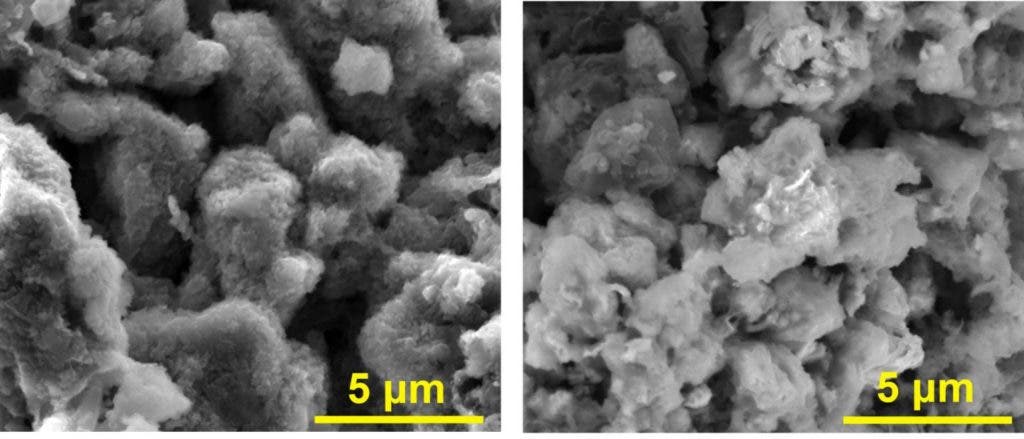Just a touch of asphalt is enough for high-capacity lithium metal batteries to charge 10 to 20 times faster than the commercially available lithium-ion variety. Additionally, the novel batteries last longer and are safer than current alternatives.

These findings were reported by a group of scientists at Rice University led by chemist James Tour. The team used porous carbon made from an asphalt derivative — specifically, untreated gilsonite — to develop the anode for their high-capacity battery. The asphalt was mixed with conductive graphene nanoribbons, and the composite was coated with lithium metal through electrochemical deposition.
When put to the test, the battery exhibited a discharging/charging rate of 20 mA/cm2 — 10 times faster than that of typical lithium-ion batteries (LIBs). The discharge rate was also up to 20 times faster than LIBs, the authors reported in the journal ACS Nano. What’s more, the device exhibited stability even after more than 500 charge-discharge cycles.
“The capacity of these batteries is enormous, but what is equally remarkable is that we can bring them from zero charge to full charge in five minutes, rather than the typical two hours or more needed with other batteries,” Tour said in a statement.
Applications requiring high-power density, as well as rapid charge and discharge could make good use of such devices. Electric cars, which are getting cheaper and rising in sales, will need a fast charging infrastructure if they’re ever to take off, for instance. When it takes just a few minutes to charge electric cars with enough power for them to drive hundreds of miles, their popularity will increase exponentially.
Due to their exceedingly high specific capacity and extremely low electrochemical potential, lithium metal batteries have been on the minds of scientists for some time. What prevented them from reaching the market is an inherent flaw concerning dendrite formation. These are mossy deposits which invade the battery’s electrolyte, which with time short-circuit the anode and cathode. When this happens, the battery fails and can even explode. Up until now, this has remained a challenge for its practical applications.
The asphalt-derived carbon prevents any dendrite formation, however. Previously, Tour and colleagues showed that lithium metal batteries whose anode is composed graphene and carbon nanotubes also prevented the formation of dendrites. The new asphalt composite anode, however, is far simpler and cheaper to make.
“While the capacity between the former and this new battery is similar, approaching the theoretical limit of lithium metal, the new asphalt-derived carbon can take up more lithium metal per unit area, and it is much simpler and cheaper to make,” he said. “There is no chemical vapor deposition step, no e-beam deposition step and no need to grow nanotubes from graphene, so manufacturing is greatly simplified.”


